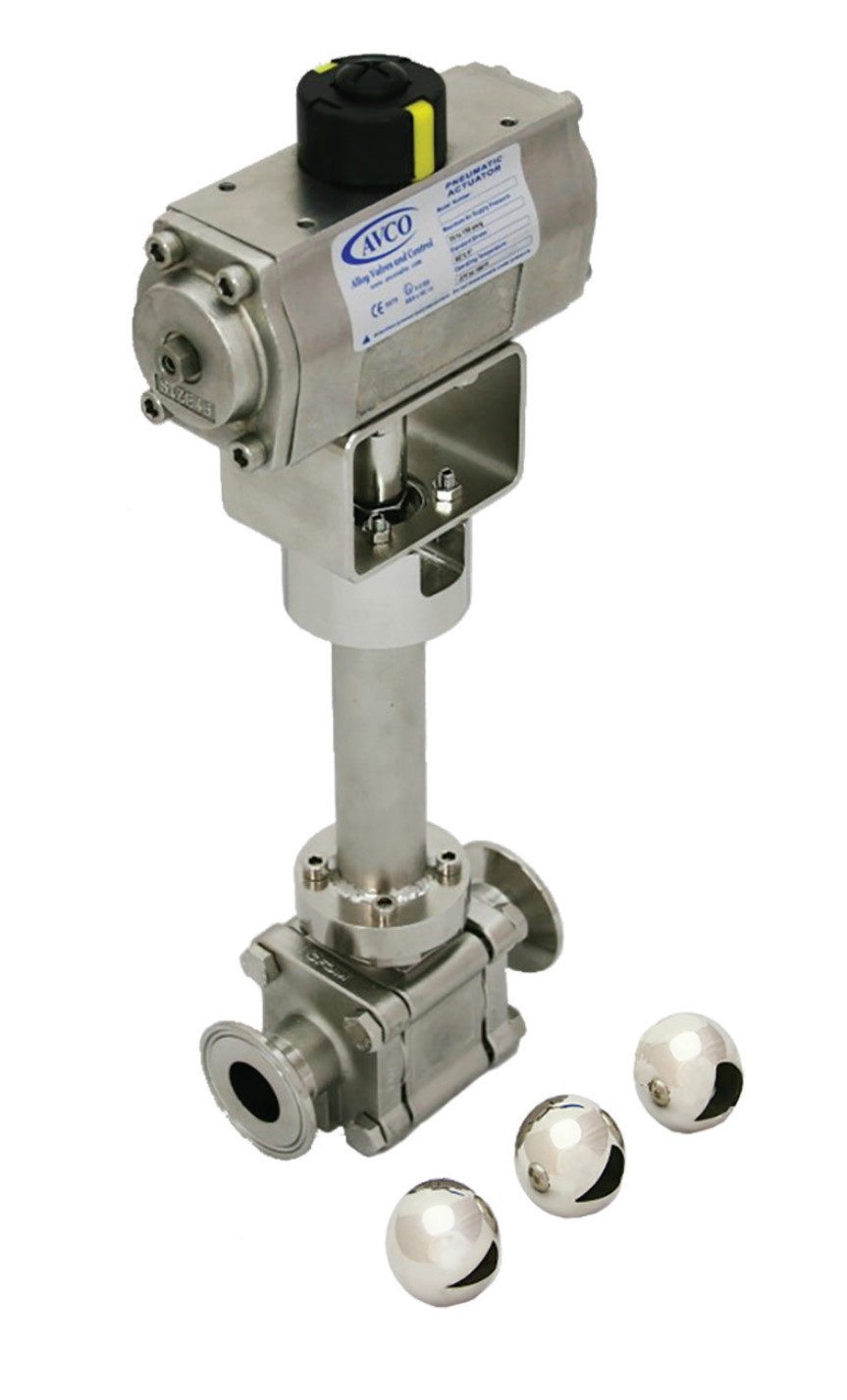 "It’s too hot, it’s too cold.” We have all heard those famous words from family, friends, coworkers or feedback from instrumentation. Whether it is to control temperature in a confined environment, rotating equipment, or bioprocessing, cryogens are utilized throughout industries.
"It’s too hot, it’s too cold.” We have all heard those famous words from family, friends, coworkers or feedback from instrumentation. Whether it is to control temperature in a confined environment, rotating equipment, or bioprocessing, cryogens are utilized throughout industries.
At times, valves are overlooked as an integral part of the equipment's performance and reliability. Not all ball valves are created equal. Valves are designed to stop/start and control the flow rate of cryogens. Failure to meet these fundamentals results in higher operating costs, equipment failure and bio process failures.
There are different types of equipment and processes for controlling cryogens in bioprocessing, pharmaceuticals, life sciences, medical devices, semi-conductors, military and space. In this article, we will review the use of ball valves in life sciences, pharma, and medical devices.
The industry standard for the design of valves, tubing, and fittings is included in ASME BPE-2022. This standard specifies the requirements for the design of bioprocessing equipment in the aforementioned industries. The particular applications and equipment include water for injection (WFI), pure water (PW), point of use (POU), integrated heat dissipation module (IHDM), heat exchange module (HEM) and magnetic resonance imaging (MRI). Providing cryogenic valves that meet or exceed industry standards is the challenge.
The performance of the valve should be based on the ability to prevent external and internal leakage with temperature swings from -320 °F to 250 °F. The inherent problems with differential temperature are the thermal expansion and contractions of valve material. In addition, there are varying degrees of expansion rates for all materials as well as the rotational force between the ball and seat.
AVCO has engineered the 2500 series to account for thermal expansion and rotational forces to provide a proven performer. The design features provide for positive sealing both internally and externally. The benefit to the end user is a lower cost of ownership. AVCO’s ability to deliver is based on commercially off-the-shelf (COTS) interchangeable components. This includes, but is not limited to valve body, ends, ball, seats and seals.
 AVCO valves and components are designed to meet the following industry standards: ASME B16.34, BS 6364 and ASME BPE 2022. These standards, also ensure the safety of plant personnel. Additionally, Alloy Valves & Control practices safety procedures within our facility and in the design of our products. Our motto is “Safety: first, last and always.”
AVCO valves and components are designed to meet the following industry standards: ASME B16.34, BS 6364 and ASME BPE 2022. These standards, also ensure the safety of plant personnel. Additionally, Alloy Valves & Control practices safety procedures within our facility and in the design of our products. Our motto is “Safety: first, last and always.”
As with all AVCO 1000 and 2000 series valves, there are options for various vee-port balls for the rate of flow. Operators include pneumatic and electric actuators. The pneumatic actuators can be supplied double-acting or spring return with analog or digital positioners. The digital positioners are available with HART, Foundation Fieldbus, or Profibus communication. For open-close feedback, we have available both mechanical and proximity switches. Electric actuators are provided in open/close or with 4-20 mA input/output signal. The supply voltage is 120VAC to 12/24VDC.
Increasing the reliability of processing equipment is the goal of machine operators, plant engineers and plant managers. This will correlate to increasing the quality of the end product and data points from the test lab – whether the test lab is an environmental arena or a test article. For the purchasing manager, a product that is competitively priced and delivered in a timely manner will improve the efficiency of the facility and ensures the client receives the product they requested. Back to the original question, “Are all ball valves created equal?” The simple answer is no. www.avcovalve.com
Images: AVCO 2500 Series ball valve with manual operator. Credit: Greg Parra; AVCO 2500 Series vee-port ball valve with pneumatic. actuator. Credit: Greg Parra



